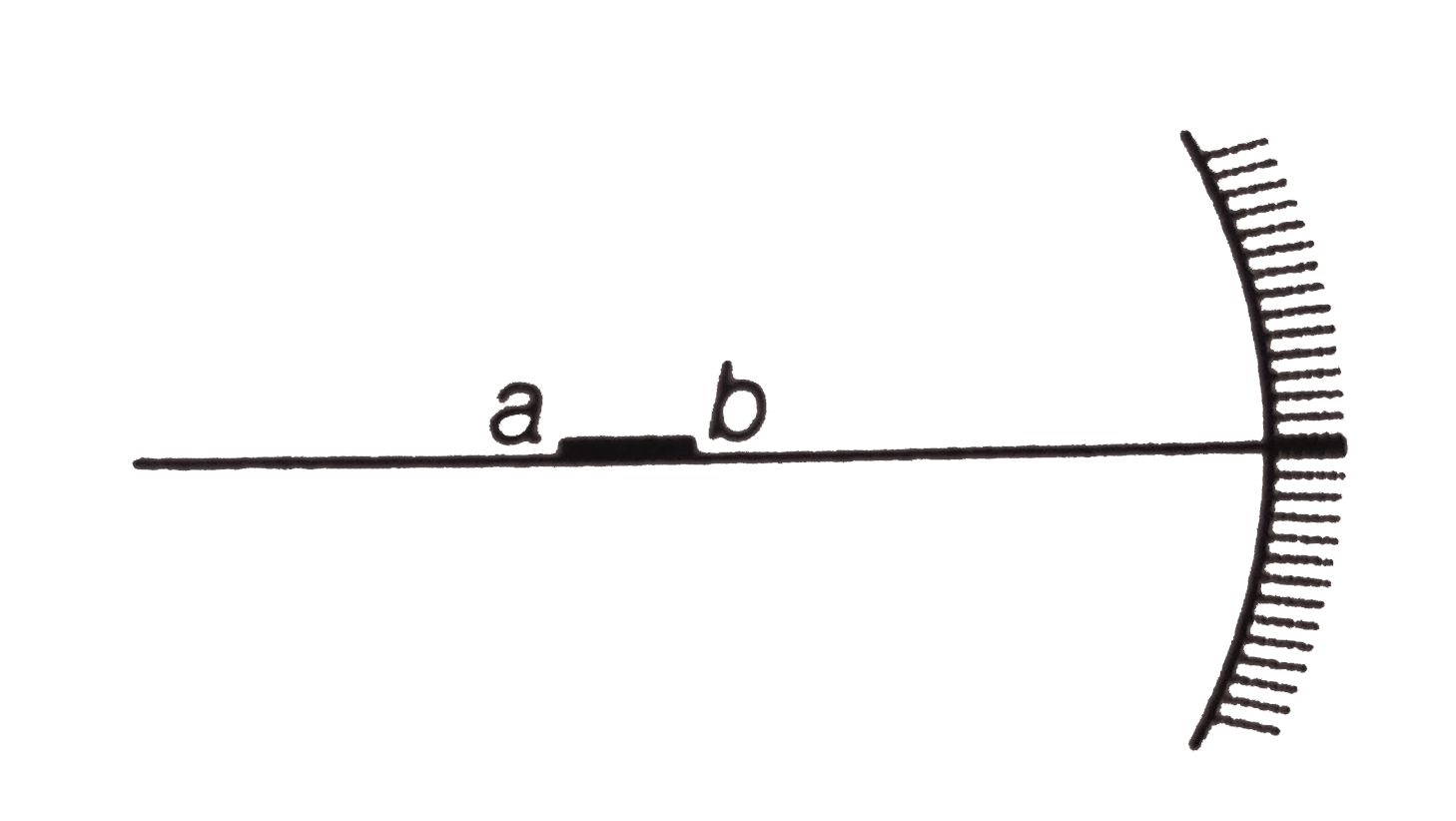When an object is kept at a distance of 30cm from a concave mirror, the image is formed at a distance of 10 cm. If the object is moved with a speed of 9cms−1 the speed with which the image moves is
To solve the problem step by step, we will use the mirror formula and the concept of differentiation to find the speed of the image when the object is moving.
Step 1: Identify the given values
- Object distance (u) = -30 cm (the object distance is taken as negative in mirror convention)
- Image distance (v) = 10 cm (the image distance is positive for a real image in a concave mirror)
- Speed of the object (du/dt) = 9 cm/s (moving towards the mirror)
Step 2: Use the mirror formula
The mirror formula is given by:
1v+1u=1f
Where:
- v = image distance
- u = object distance
- f = focal length
Step 3: Differentiate the mirror formula
Differentiating both sides with respect to time t:
ddt(1v)+ddt(1u)=0
Using the chain rule:
−1v2dvdt−1u2dudt=0
Step 4: Rearranging the equation
Rearranging gives:
dvdt=−v2u2dudt
Step 5: Substitute the known values
Now, substituting the known values into the equation:
- v=10 cm
- u=−30 cm (but we will use 30 in the calculation since we are squaring it)
- dudt=9 cm/s
Substituting these values:
dvdt=−(10)2(30)2⋅9
dvdt=−100900⋅9
dvdt=−19⋅9=−1 cm/s
Step 6: Find the speed of the image
The speed of the image is the magnitude of dvdt:
∣∣∣dvdt∣∣∣=1 cm/s
Final Answer
The speed with which the image moves is 1 cm/s.
---
- Object distance (u) = -30 cm (the object distance is taken as negative in mirror convention)
- Image distance (v) = 10 cm (the image distance is positive for a real image in a concave mirror)
- Speed of the object (du/dt) = 9 cm/s (moving towards the mirror)
The mirror formula is given by:
1v+1u=1f
Where:
- v = image distance
- u = object distance
- f = focal length
Differentiating both sides with respect to time t:
ddt(1v)+ddt(1u)=0
Using the chain rule:
−1v2dvdt−1u2dudt=0
Rearranging gives:
dvdt=−v2u2dudt
Now, substituting the known values into the equation:
- v=10 cm
- u=−30 cm (but we will use 30 in the calculation since we are squaring it)
- dudt=9 cm/s
dvdt=−(10)2(30)2⋅9
dvdt=−100900⋅9
dvdt=−19⋅9=−1 cm/s
The speed of the image is the magnitude of dvdt:
∣∣∣dvdt∣∣∣=1 cm/s
The speed with which the image moves is 1 cm/s.
Topper's Solved these Questions
Similar Questions
When an object is kept at a distance of 30cm from a concave mirror, the image is formed at a distance of 10 cm. if the object is moved with a speed of 9 cm/s, find the speed (in cm/s) with which image moves.
View SolutionAn object is placed at a distance of 30 cm from a concave mirror and its real image is formed at a distance of 30 cm from the mirror. The focal length of the mirror is
View Solution
Knowledge Check
When an object is kept at a distance of 30cm from a concave mirror, the image is formed at a distance of 10 cm. If the object is moved with a speed of 9ms−1 the speed with which the image moves is
A10ms−1B1ms−1C9ms−1D0.9ms−1
For an object placed at a distance 20 cm from a concave mirror, the image is formed at the same position. What is the focal length of the mirror?
View SolutionA concave mirror forms an image of the sun at a distance of 12 cm from it.
View SolutionAn object is placed 40 cm from a concave mirror of focal length 20 cm. The image formed is
View SolutionAn object is placed at a distance of 20 cm from a concave mirror of focal lenght 10 cm. What is the image distance?
View SolutionA point object is placed at a distance of 10 cm and its real image is formed at a distance of 20 cm from a concave mirror. If the object is moved by 0.1 cm towards the mirror, the image will shift by about
View SolutionA point object is placed at a distamce of 10 cm anad its real image is formed at a distance of 20 cm from a concave mirror. If the object is moved by 0.1 cm towards the mirror. The image will shift by about
View Solution
A small object ab of size 1mm is kept at a distance of 40 cm form a concave mirror of focal length 30 cm. Make image of this object.
View Solution